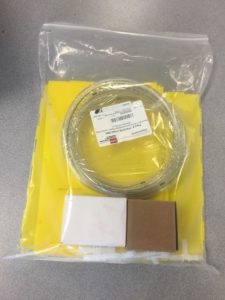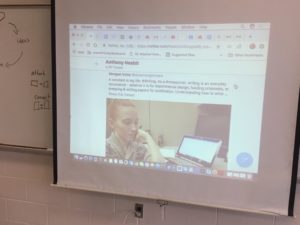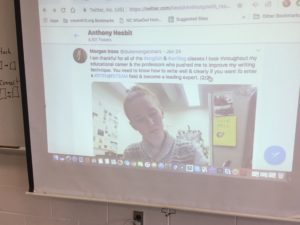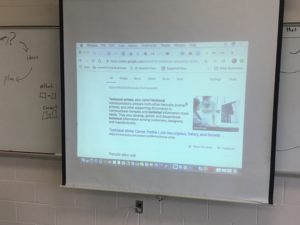STEM Career Pathways: Technical Writers
Shortly after the students returned from the FAB LAB with planter kits in hand, I immediately began to think about a writing activity where the students could explain how to assemble their planters. After all, explaining a process is an important communication skill that English learners need to know. They need to be able to communicate to an audience in an organized manner using specific academic vocabulary words. The lesson was all set. I really had not thought about linking this activity to a career until a student asked, “How will we put this together, if we don’t have instructions?” So true, I thought. We needed  instructions indeed. I asked the students if they knew where instructions came from. Many probably assumed that they just magically appeared or as another student pointed out: “We could just go to Youtube and watch how to assemble it.” It was at that moment that I realized that students could write/record the planter assembly explanation while simultaneously learning about a STEM career.
instructions indeed. I asked the students if they knew where instructions came from. Many probably assumed that they just magically appeared or as another student pointed out: “We could just go to Youtube and watch how to assemble it.” It was at that moment that I realized that students could write/record the planter assembly explanation while simultaneously learning about a STEM career.
At about the same that I was planning this lesson, I read a tweet from Morgan Irons that really spoke to me. I began following Morgan after I tweeted about doing an experiment with my students comparing and contrasting seeds grown in Earth soil and Martian regolith simulant.  Morgan has incredible expertise in Martian soil and deep space agriculture, but the tweet that really spoke to me was one where she said, “A constant in my life: Writing. As a researcher, writing is an everyday occurrence – whether it is for experimental design, funding proposals, or prepping & writing papers for publication.” She continued, “Understanding how to write creatively & technically is fundamental for success.” She goes on to say that, “I am thankful for all of the English & writing classes I took throughout my educational career & the professors who pushed me to improve my writing technique. You need to know how to write well & clearly if you want to enter a STEM/STEAM field & become a leading expert.”
Morgan has incredible expertise in Martian soil and deep space agriculture, but the tweet that really spoke to me was one where she said, “A constant in my life: Writing. As a researcher, writing is an everyday occurrence – whether it is for experimental design, funding proposals, or prepping & writing papers for publication.” She continued, “Understanding how to write creatively & technically is fundamental for success.” She goes on to say that, “I am thankful for all of the English & writing classes I took throughout my educational career & the professors who pushed me to improve my writing technique. You need to know how to write well & clearly if you want to enter a STEM/STEAM field & become a leading expert.”

Just then, I realized that this lesson about explaining a process could be turned into an opportunity to learn about and practice the skills of a very important STEM career: A technical writer.
Technical writers, one of the highest paid STEM careers, are those who creatively write guides and how to instruction manuals. They take complex ideas and put them into a more understandable format.
So, I posed the following scenario to my class: You are the technical writer tasked with creating an instruction manual or a youtube how-to video for a “planter kit” that a customer just purchased.
Doing this added context to the lesson about explaining a process. One student even used this as his focusing question and hook for the audience. He went on to explain to his audience of customers how they would assemble the their planters.
After the lesson and the submissions, I shared an authentic set of Ikea instructions and how this multi-billion-dollar company employs technical writers (many of whom are bilingual) to write instructions for their products.
I think the students came away from this activity with good perspective about the importance of writing and also what career opportunities are available for writers.
